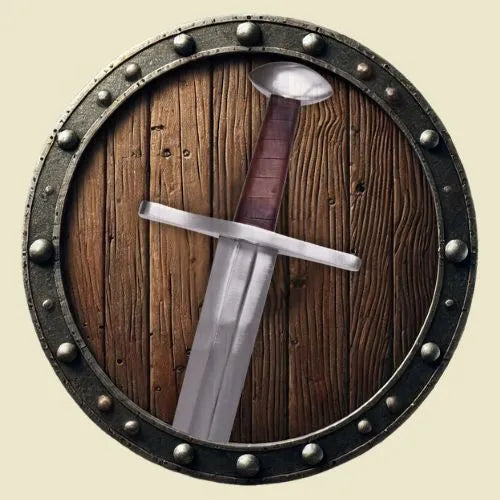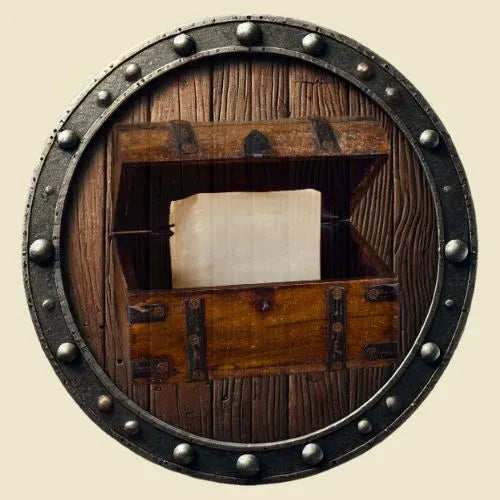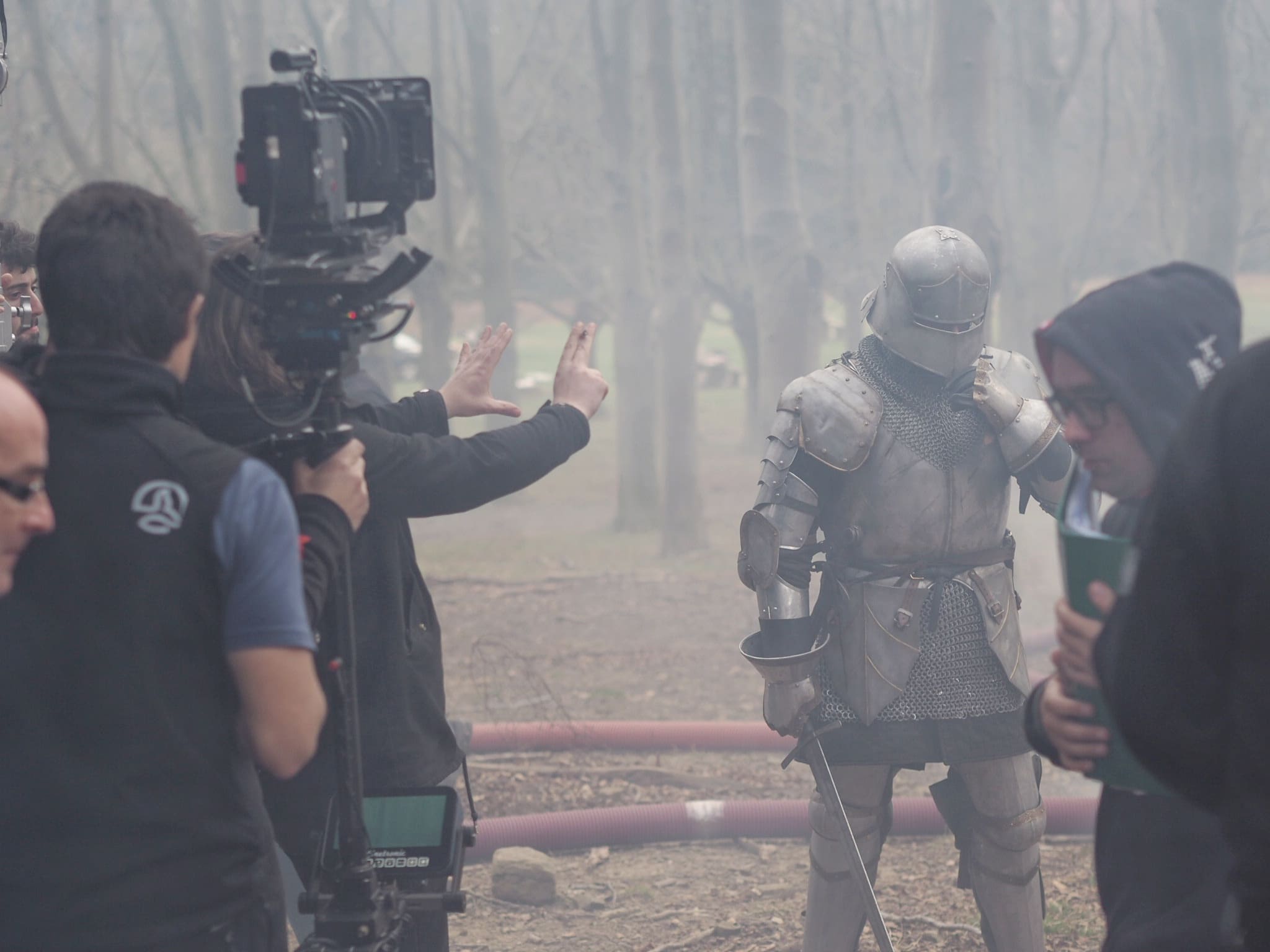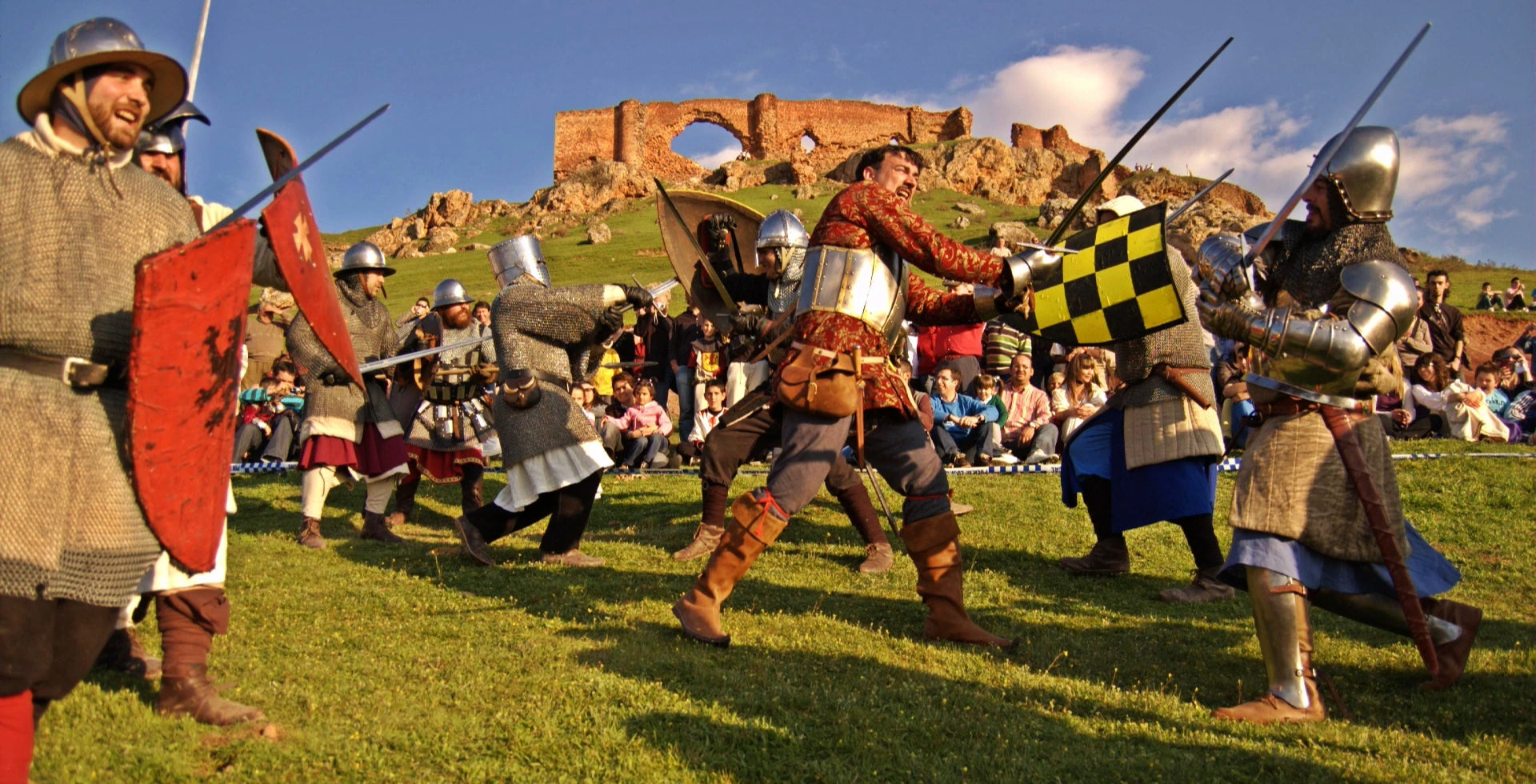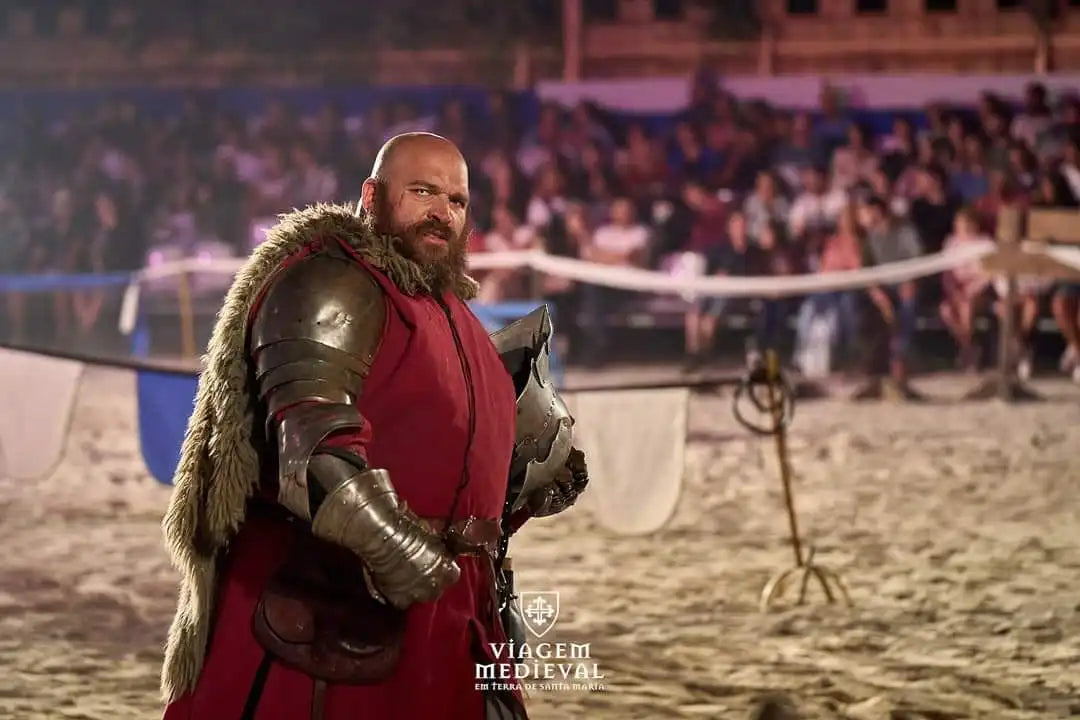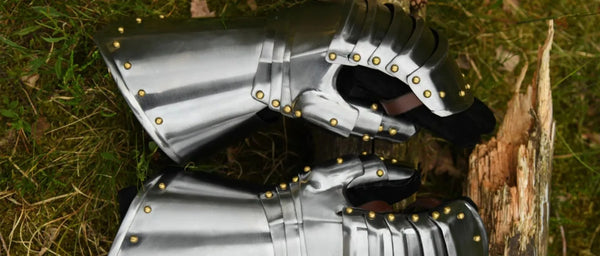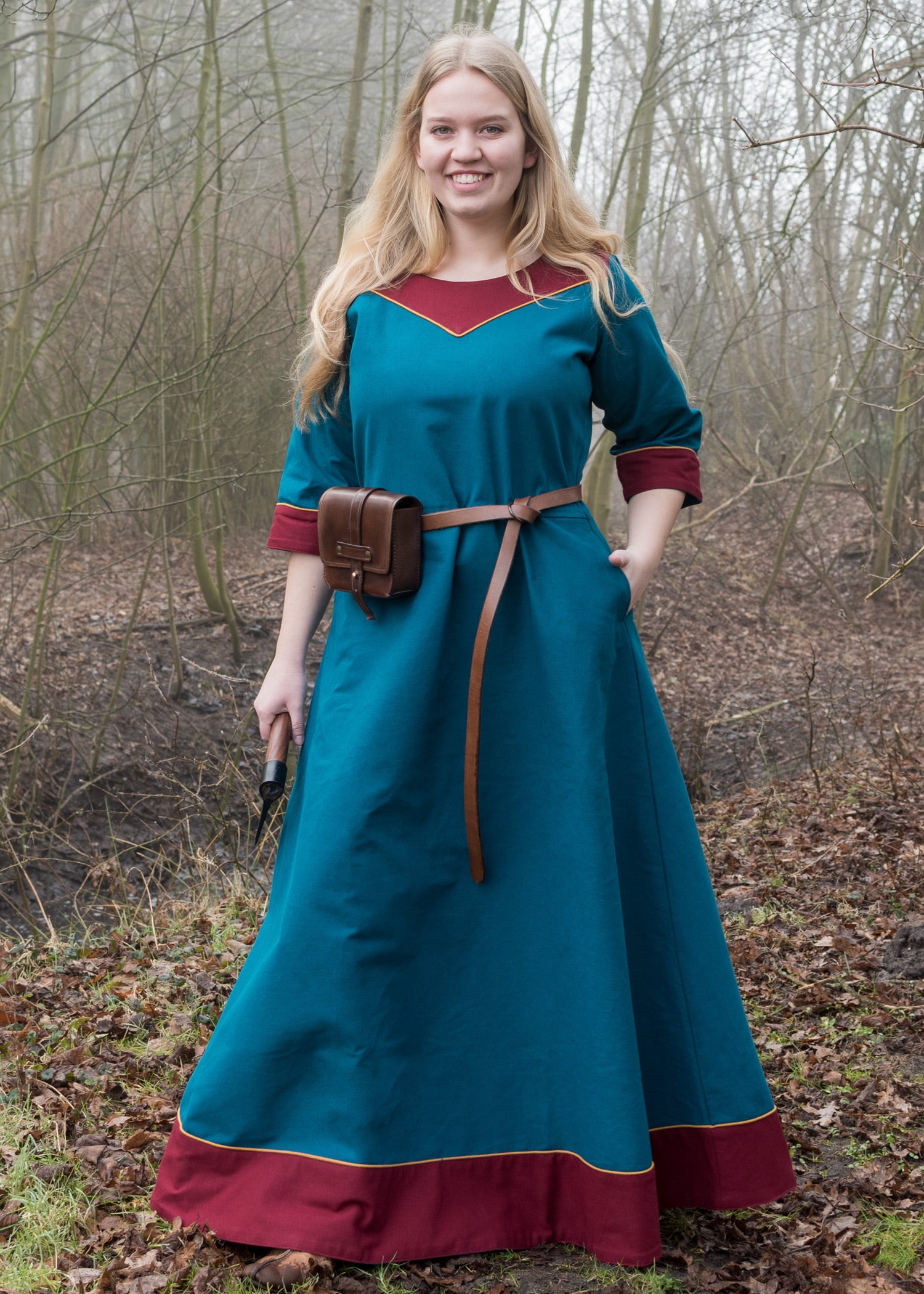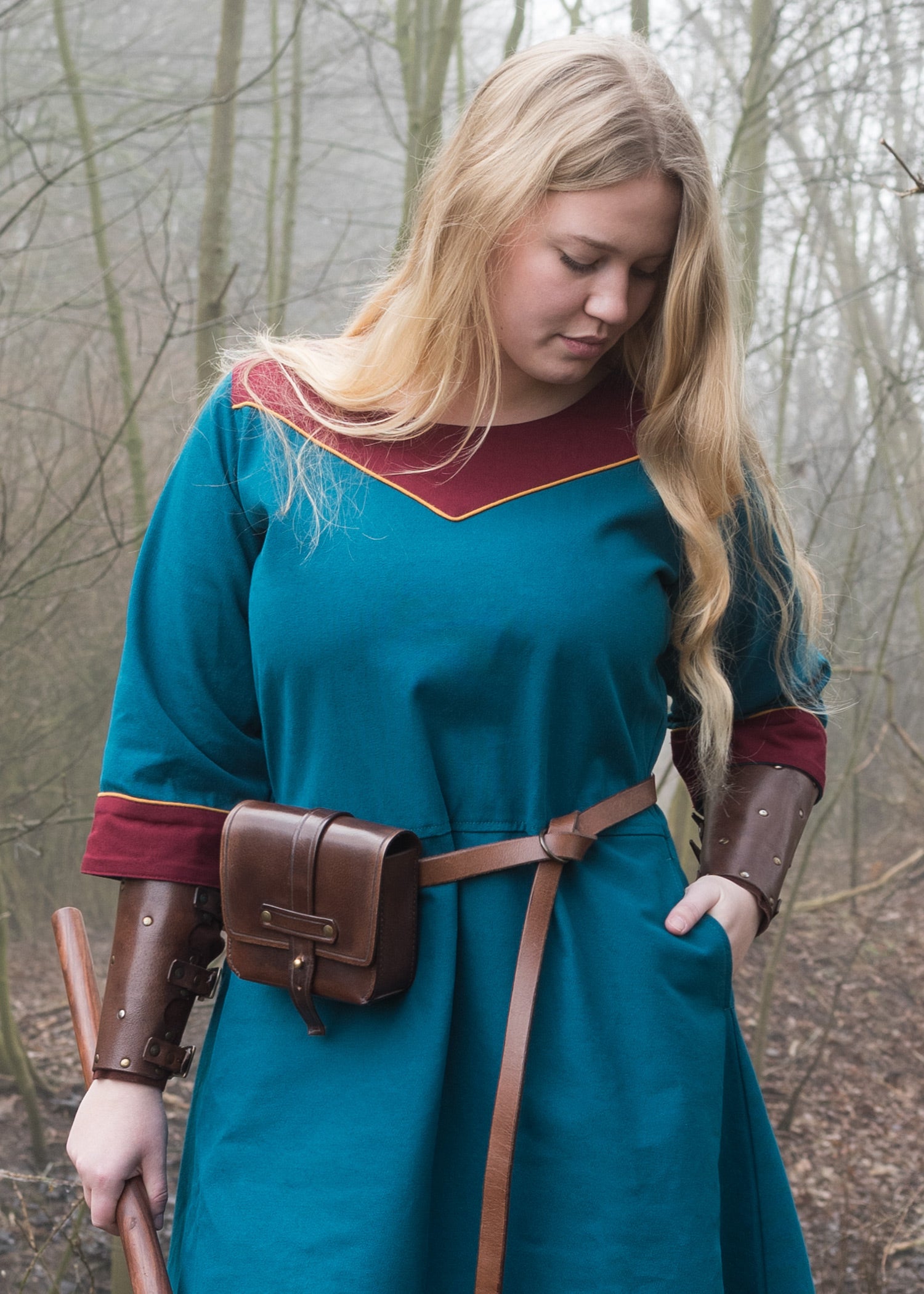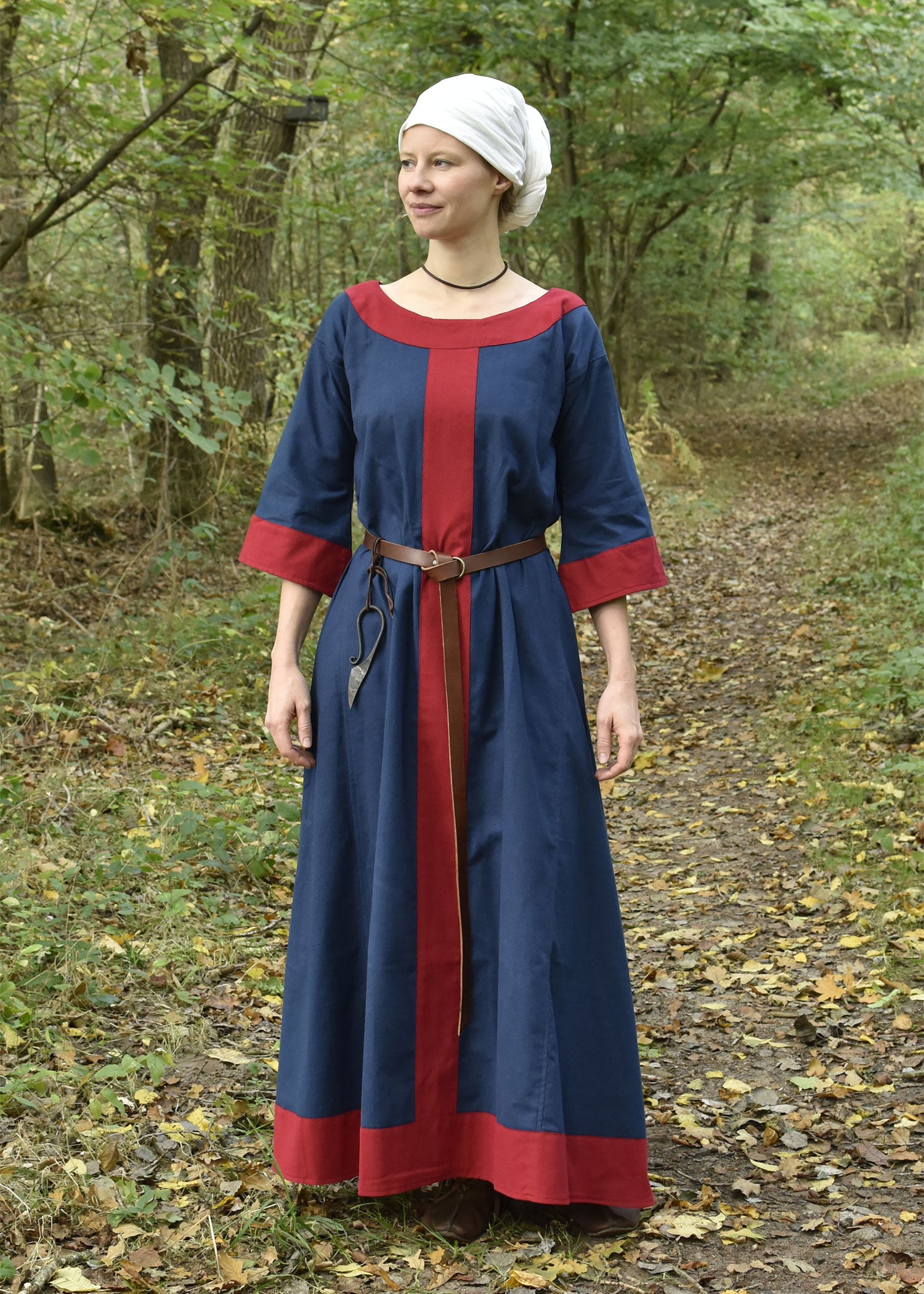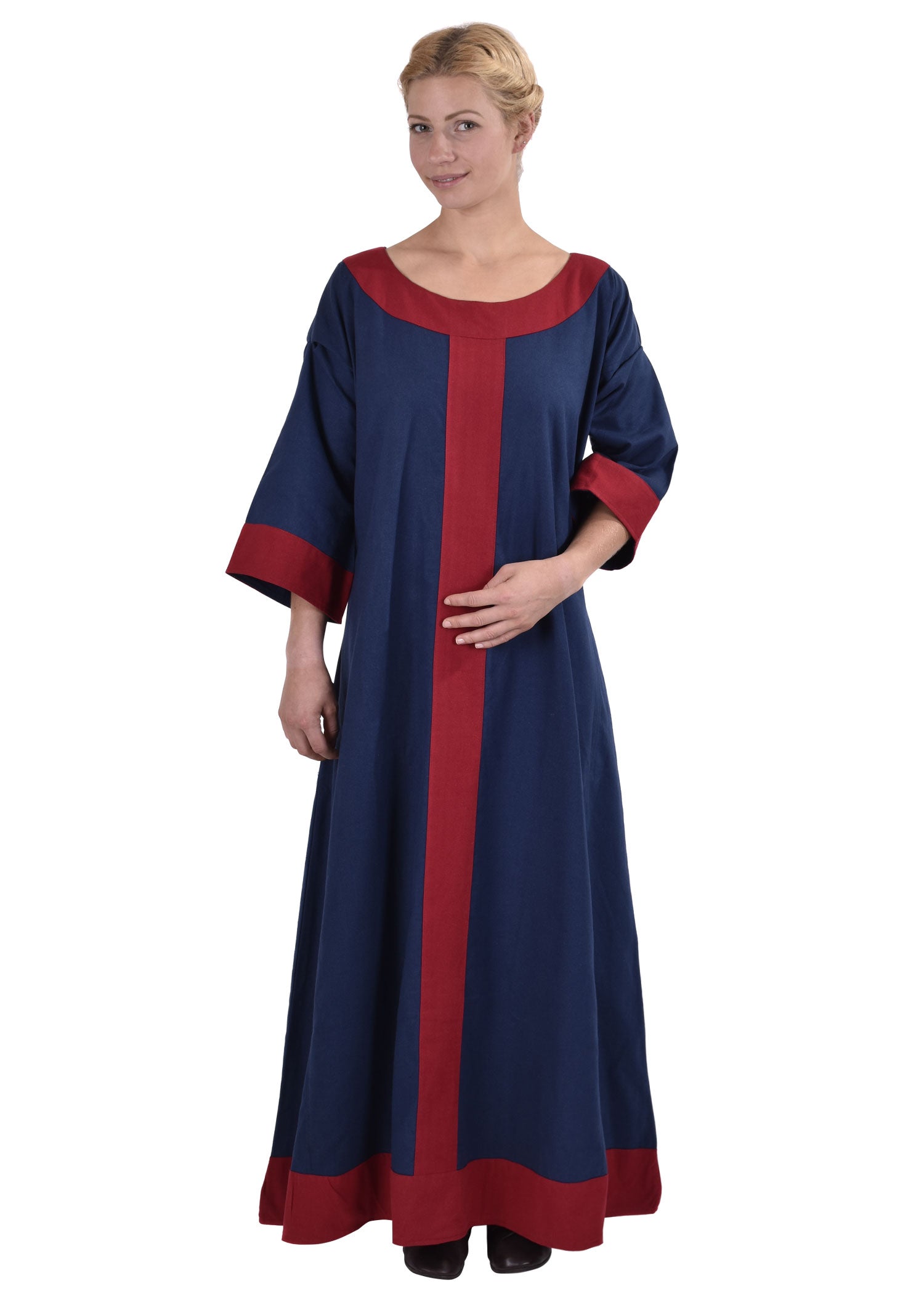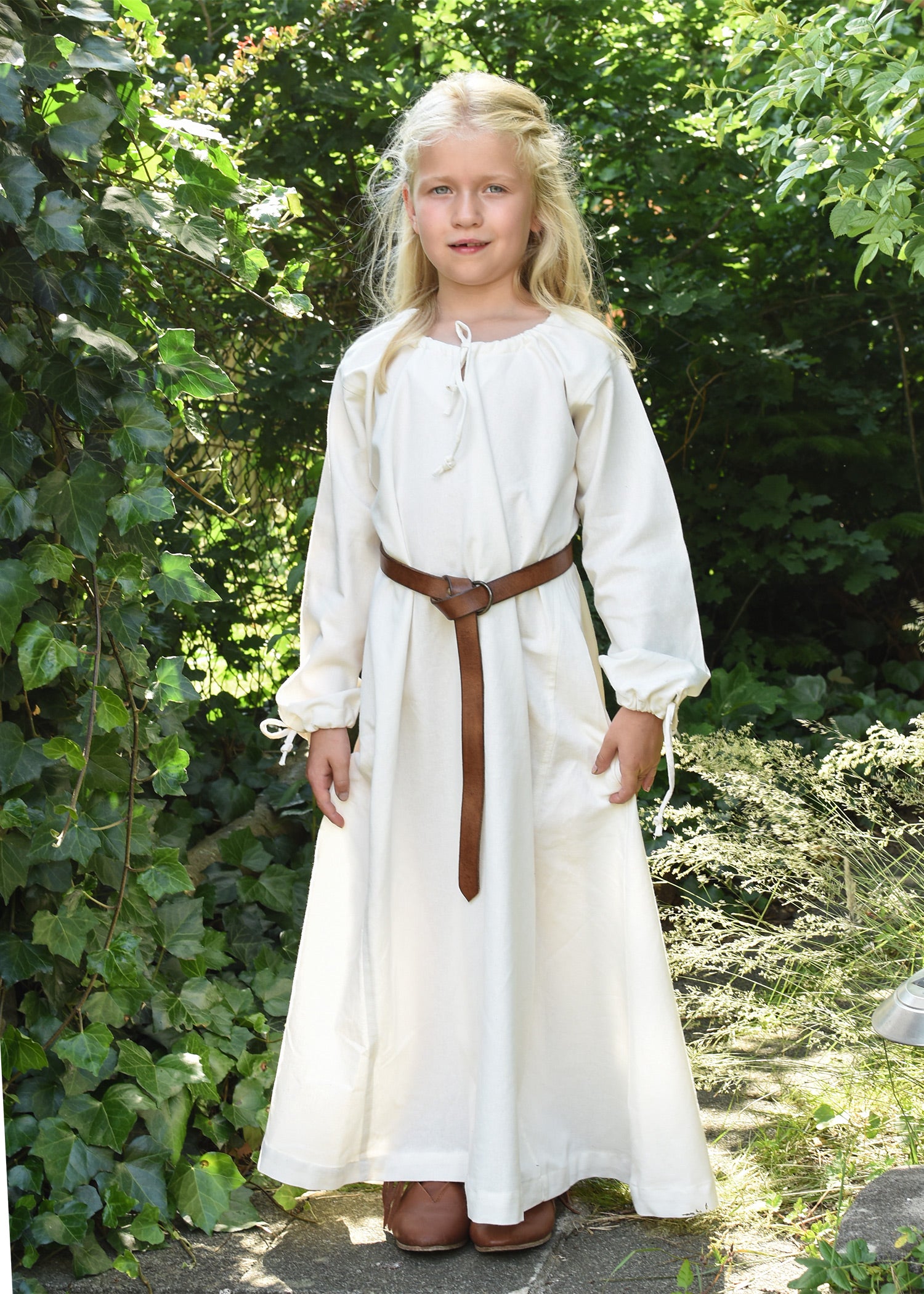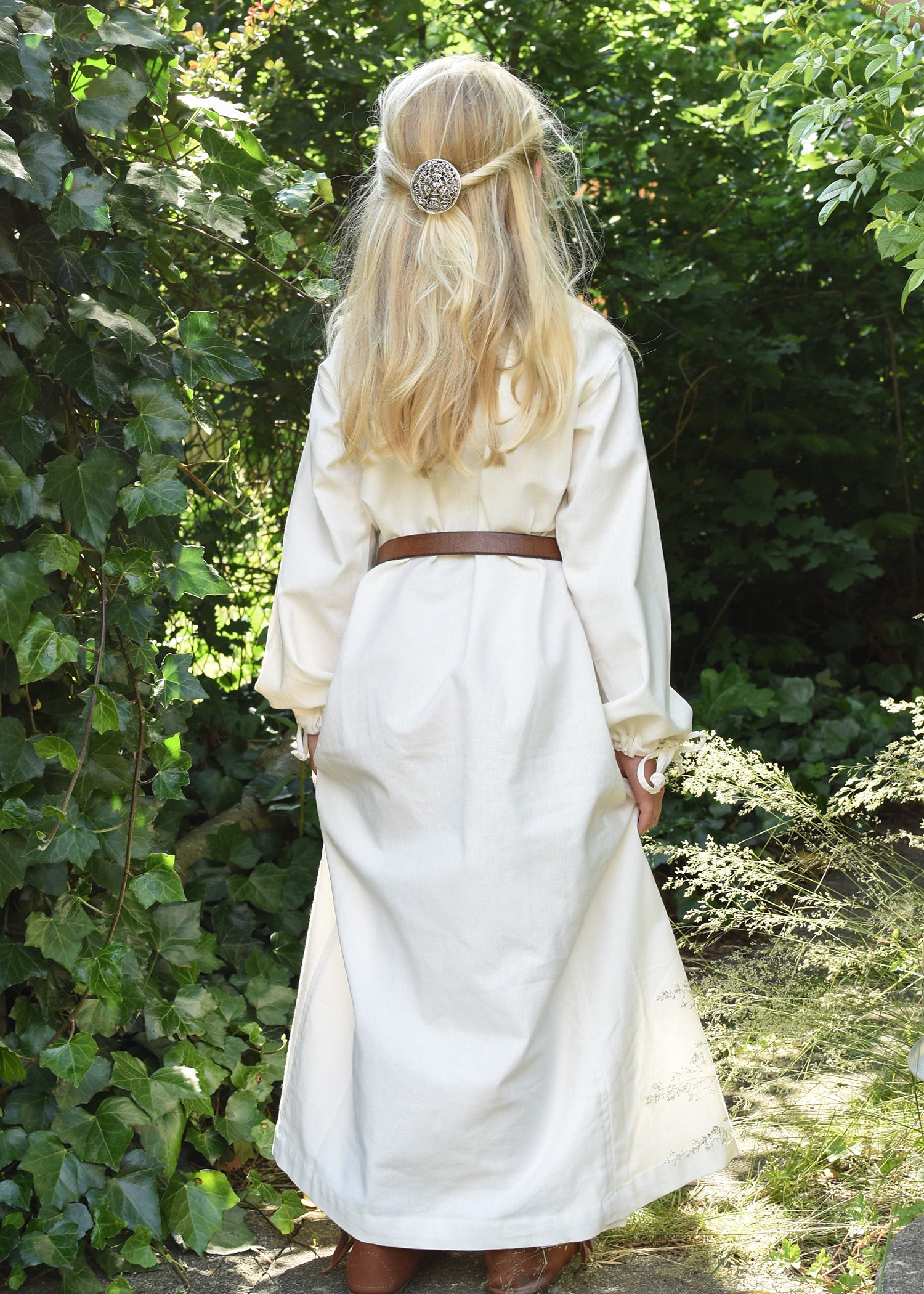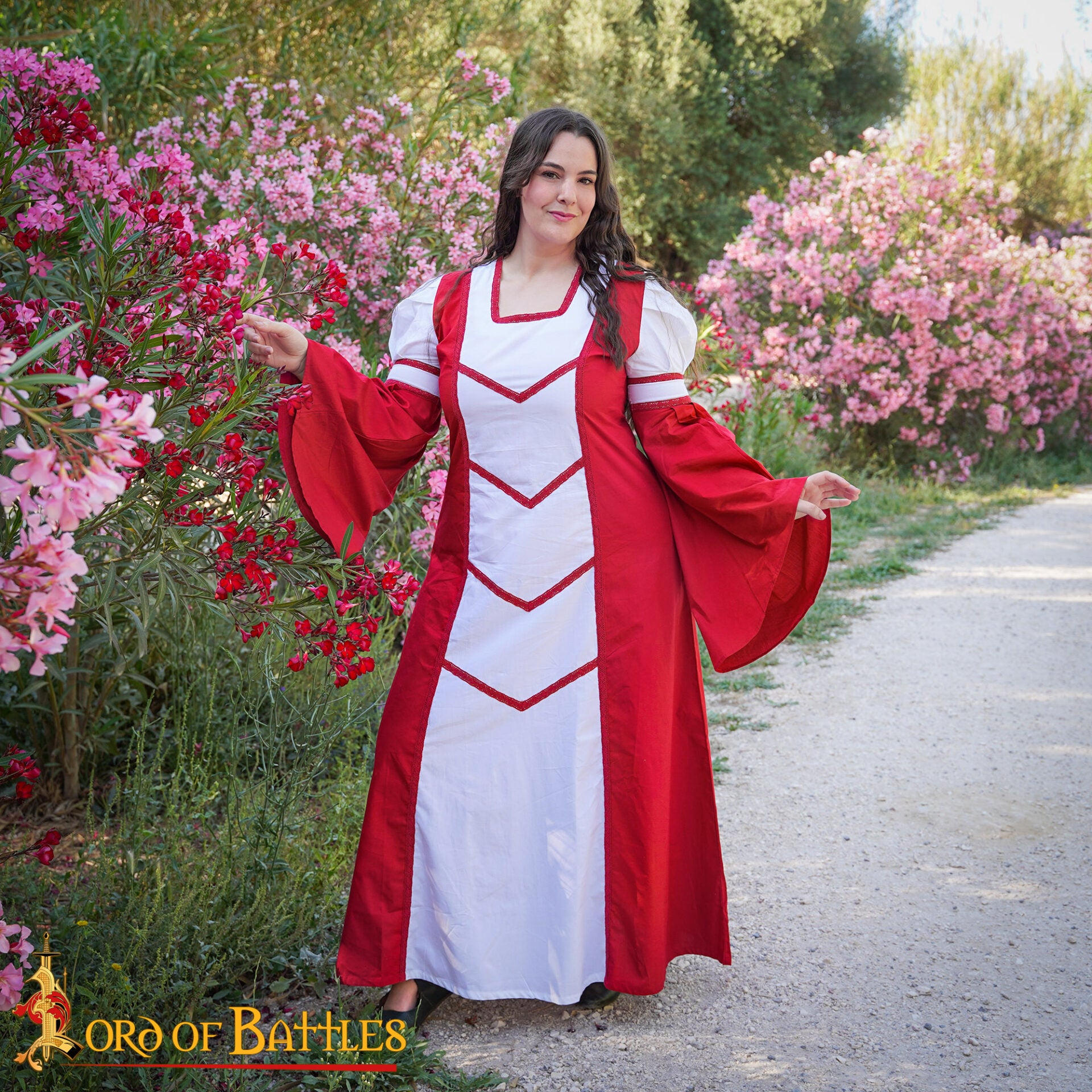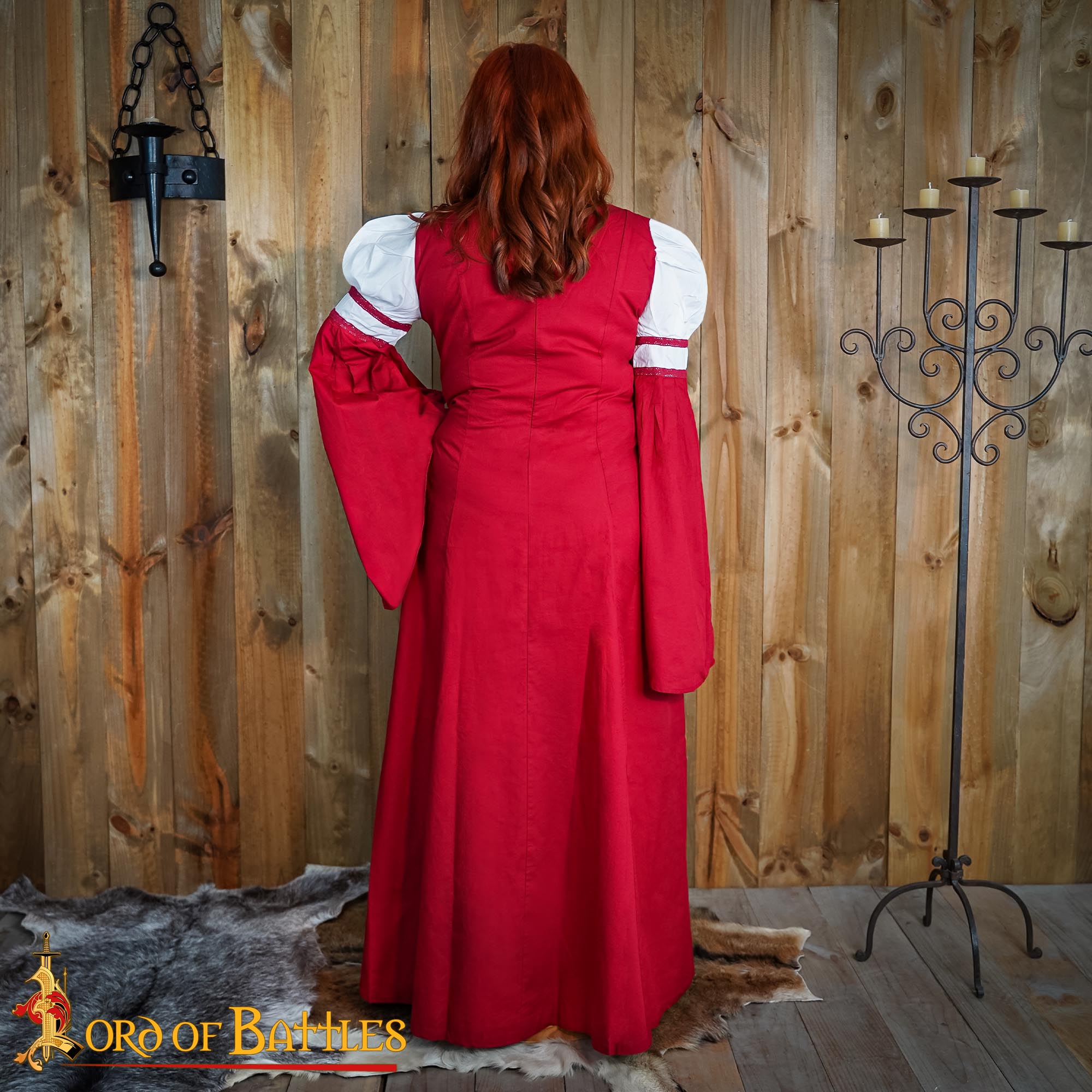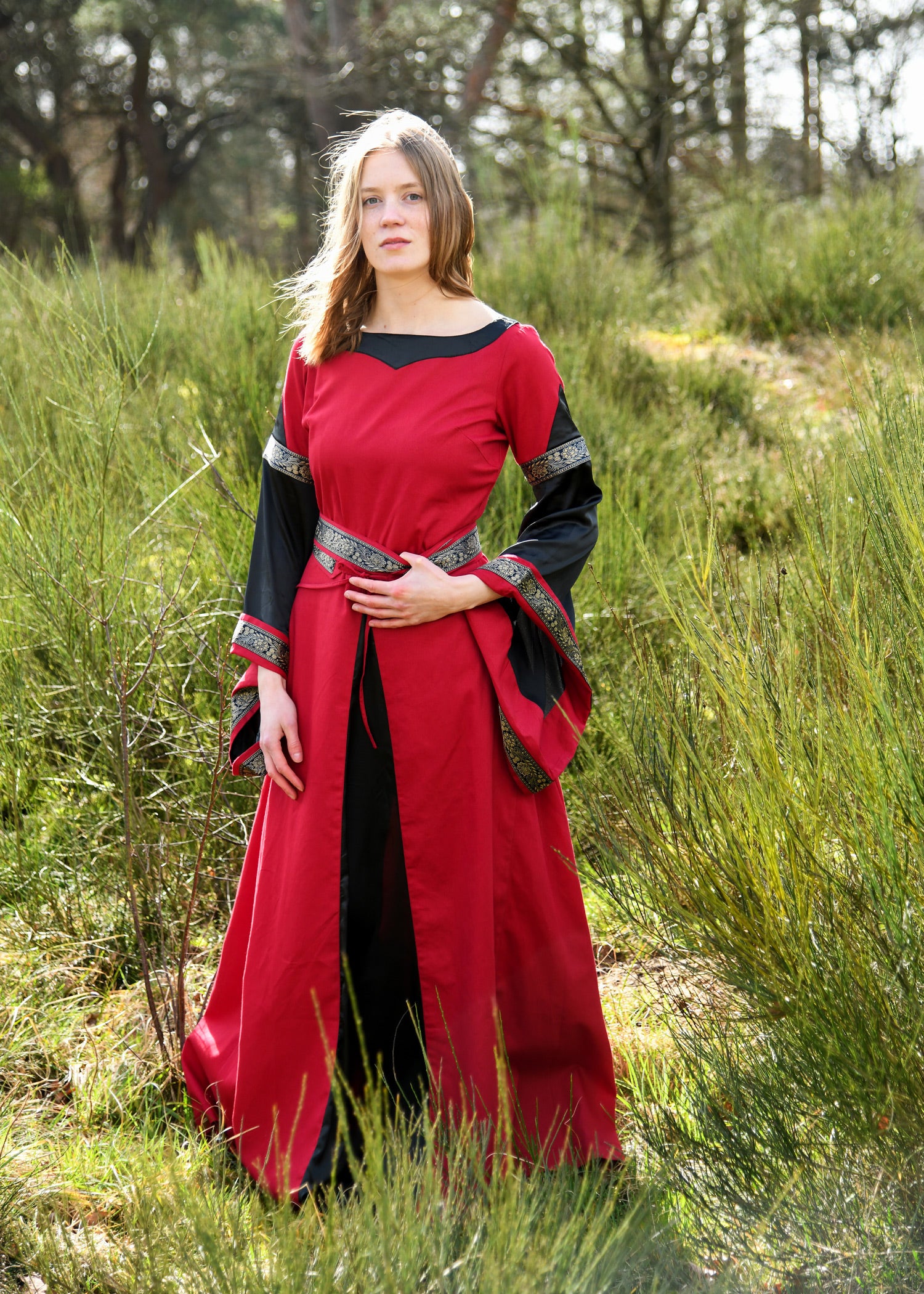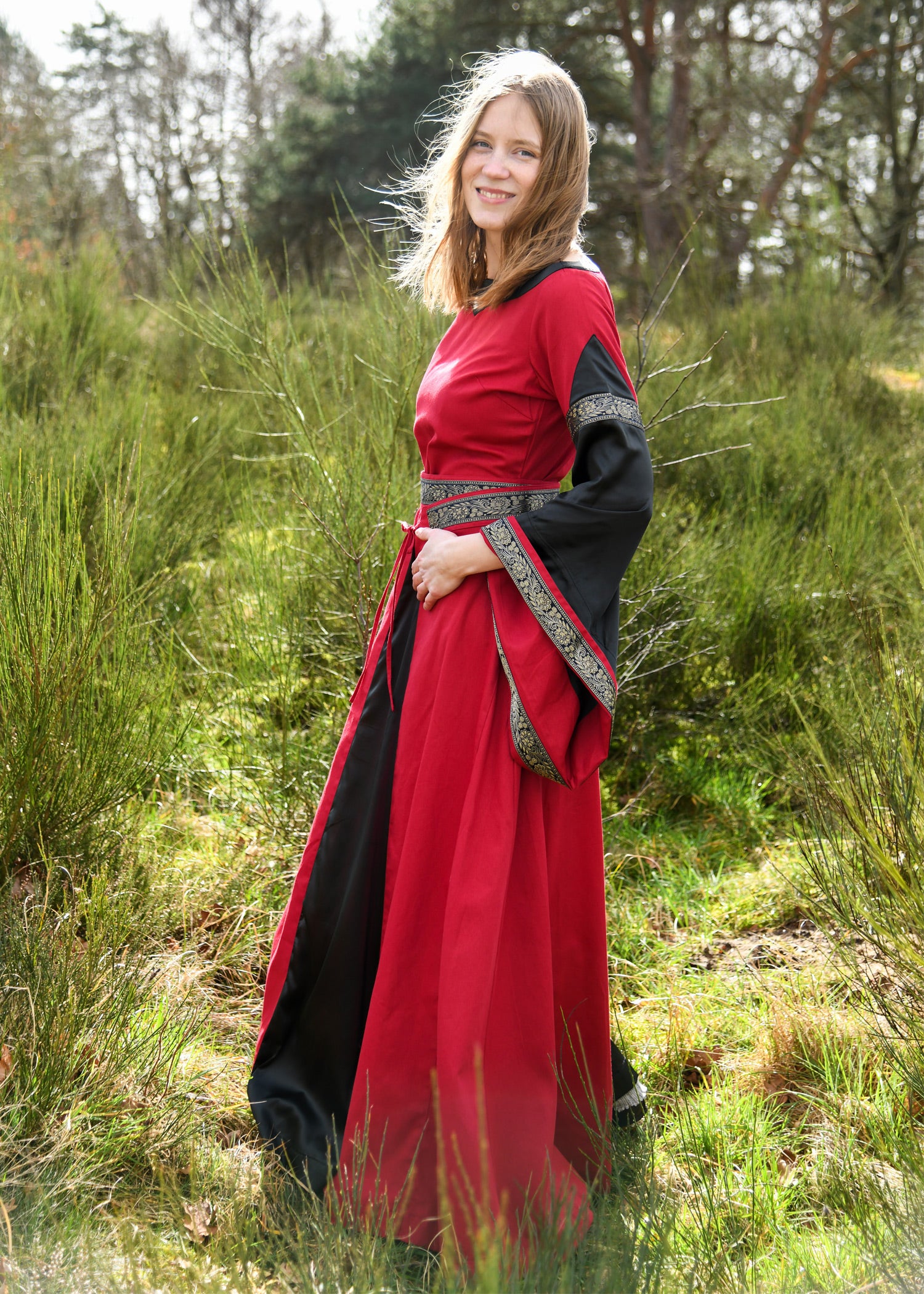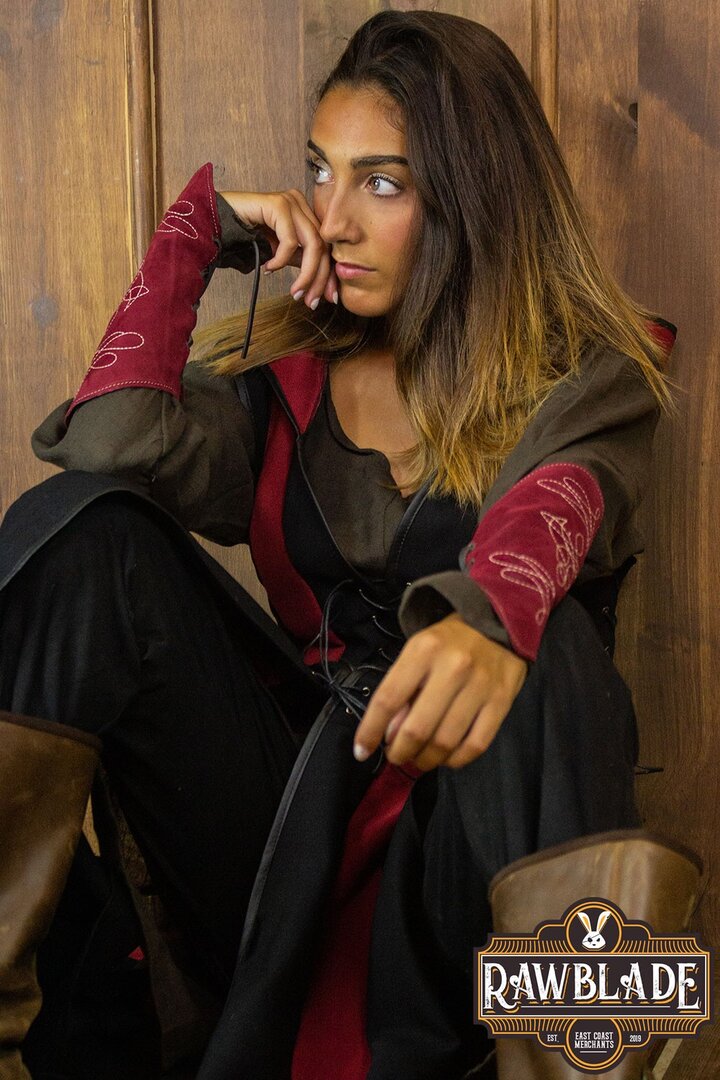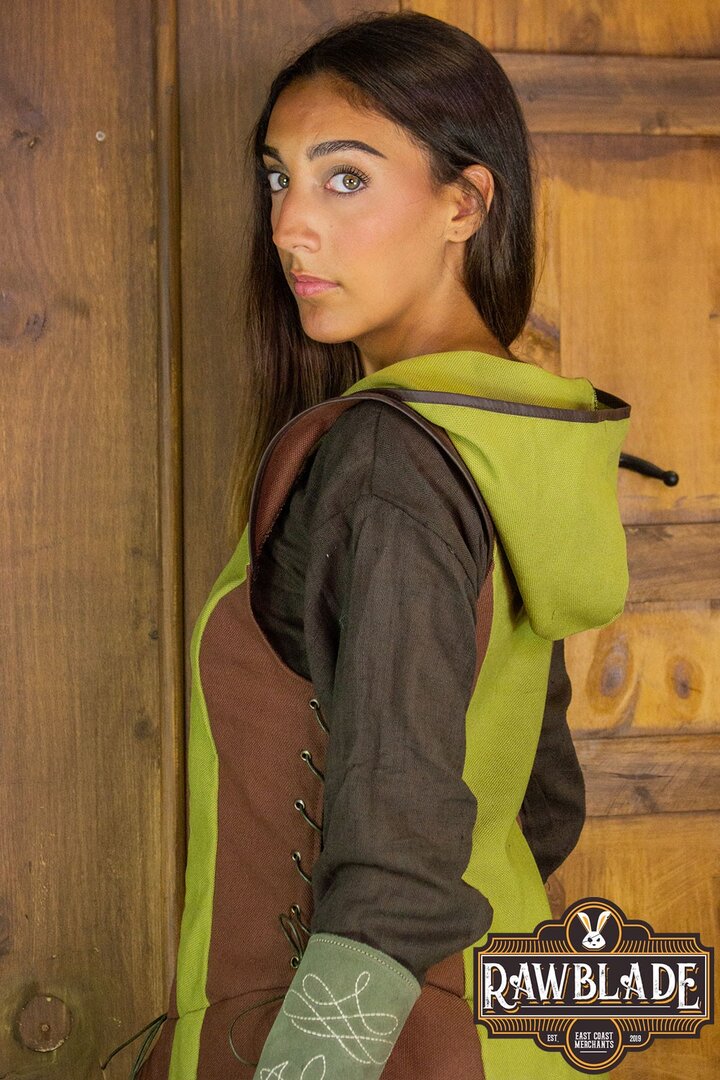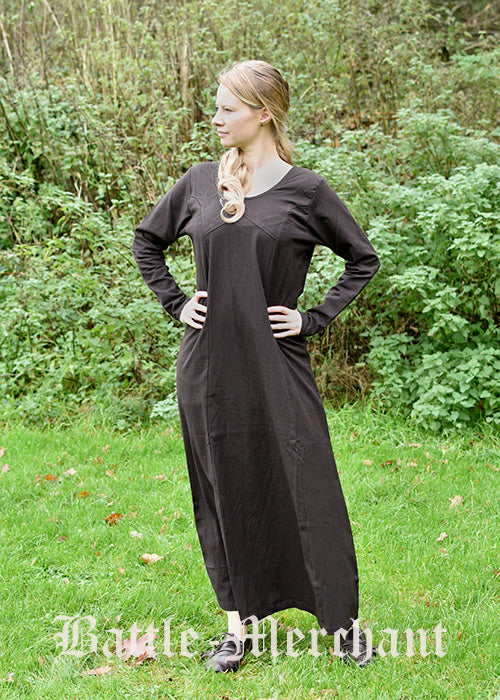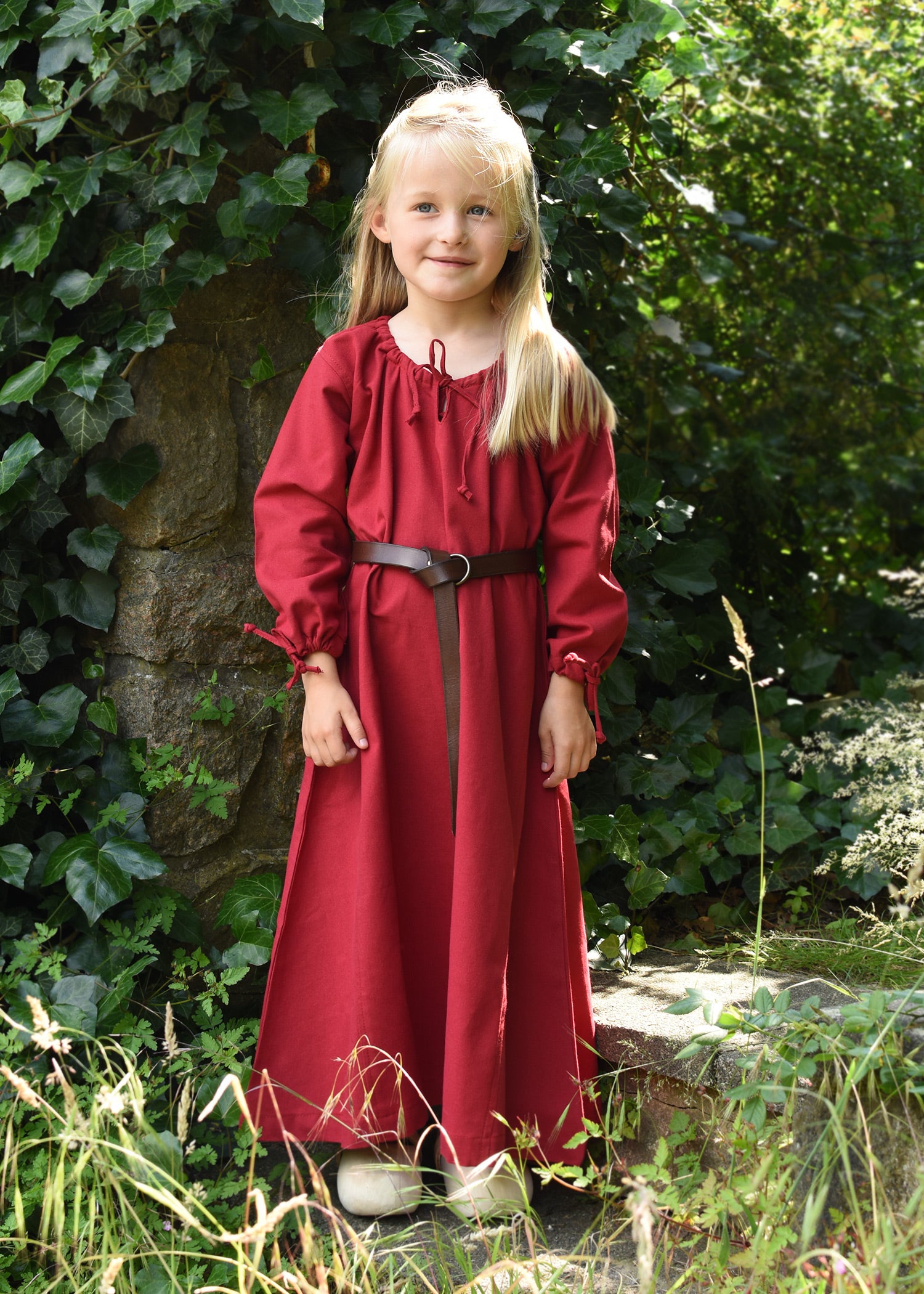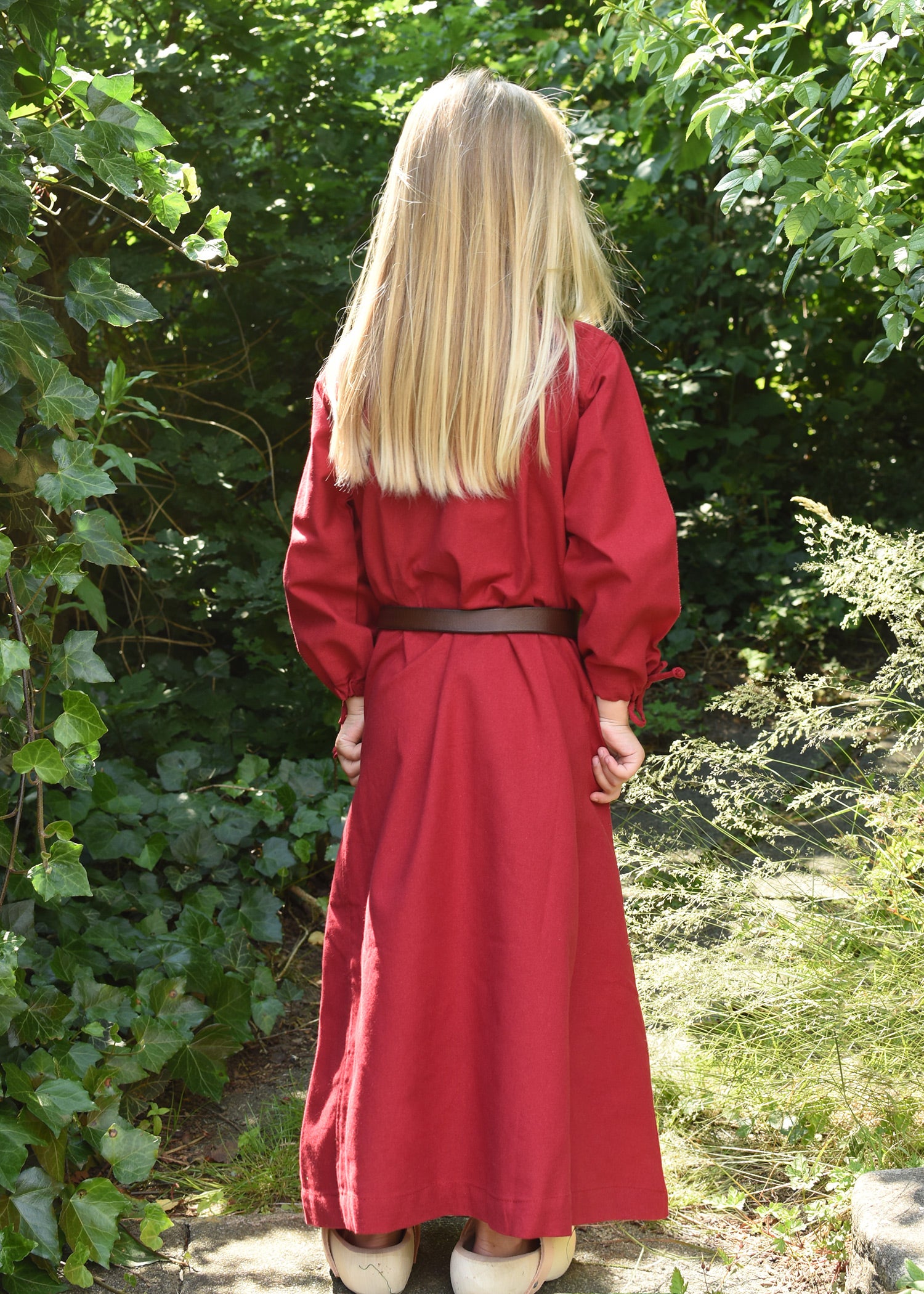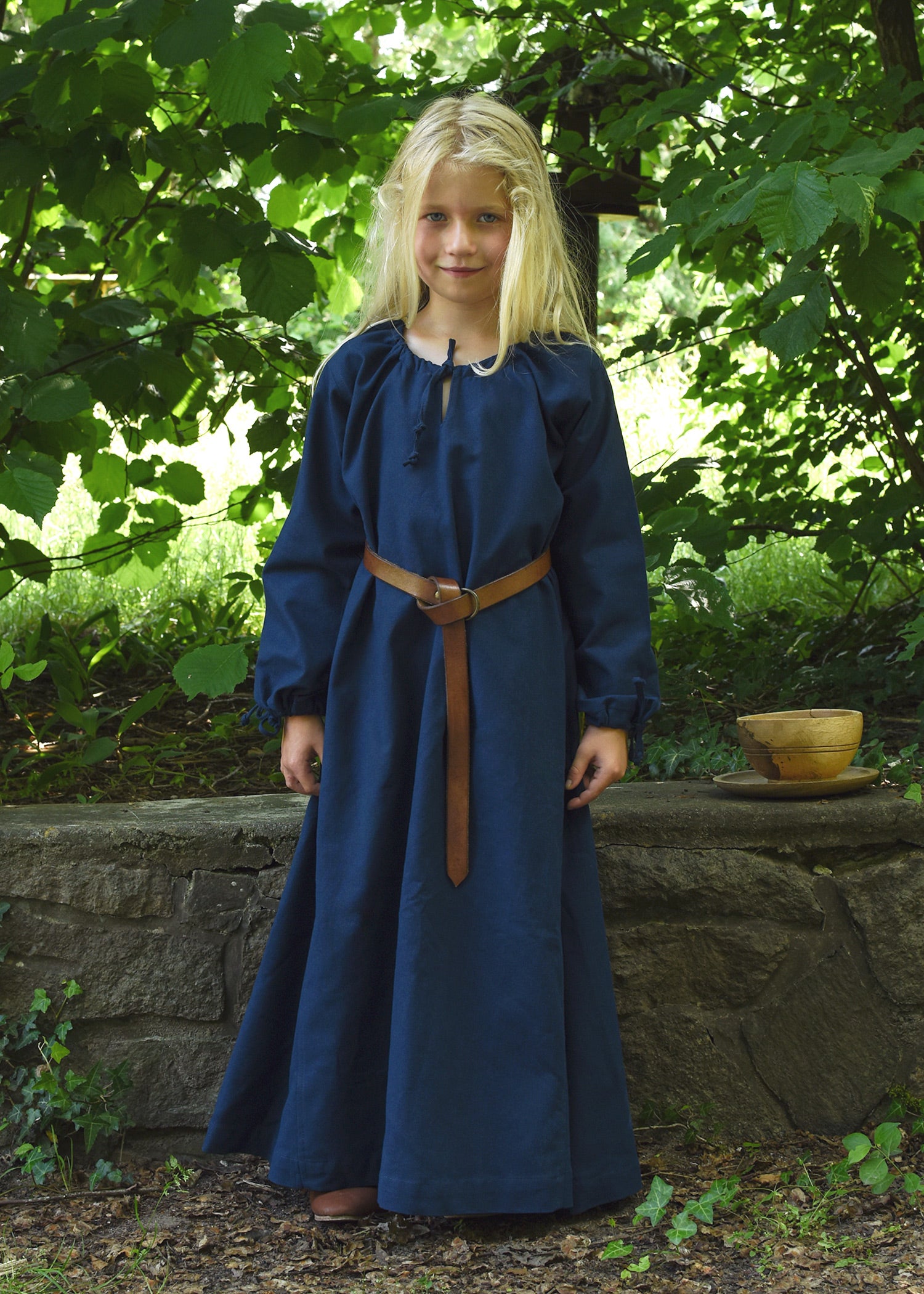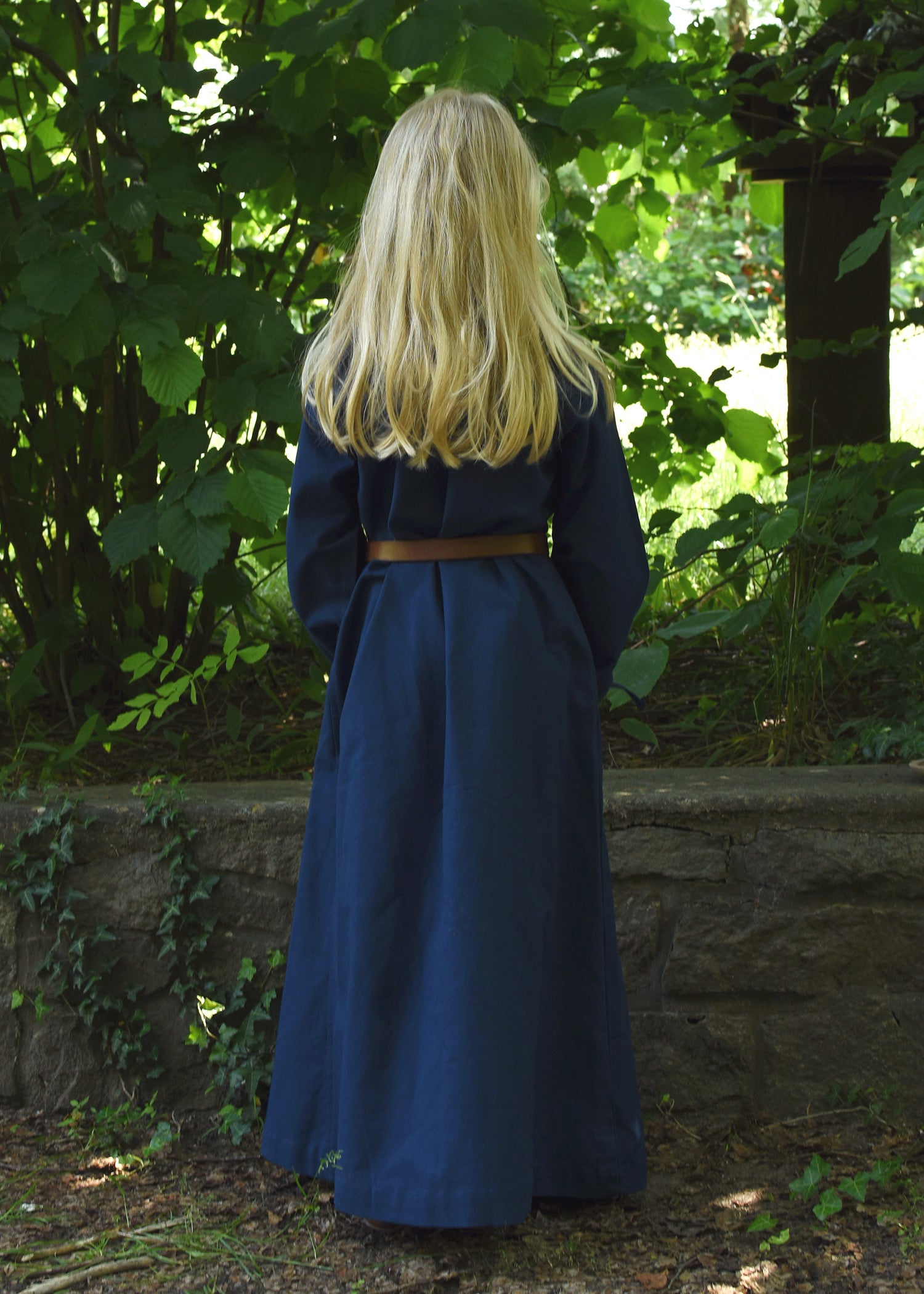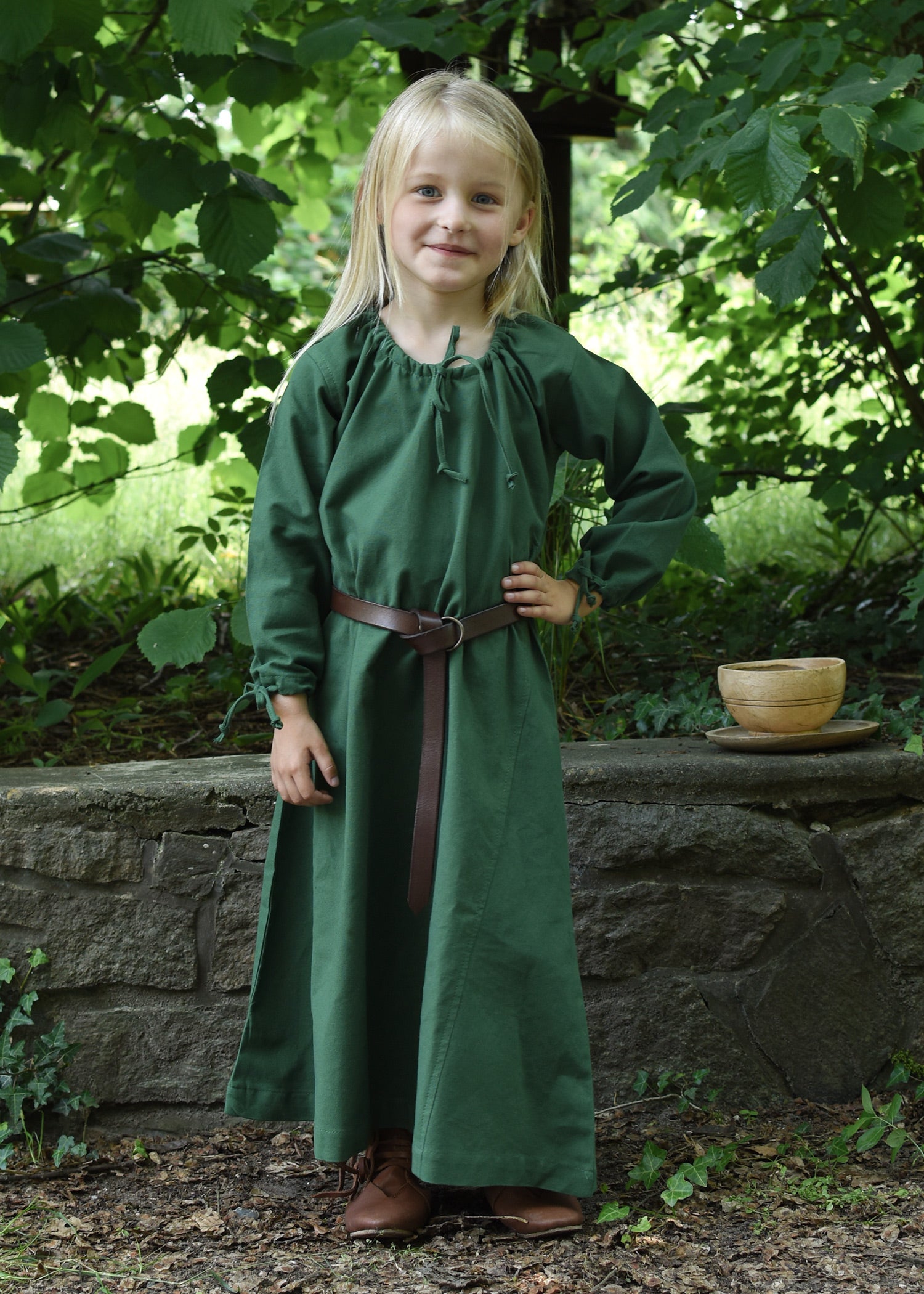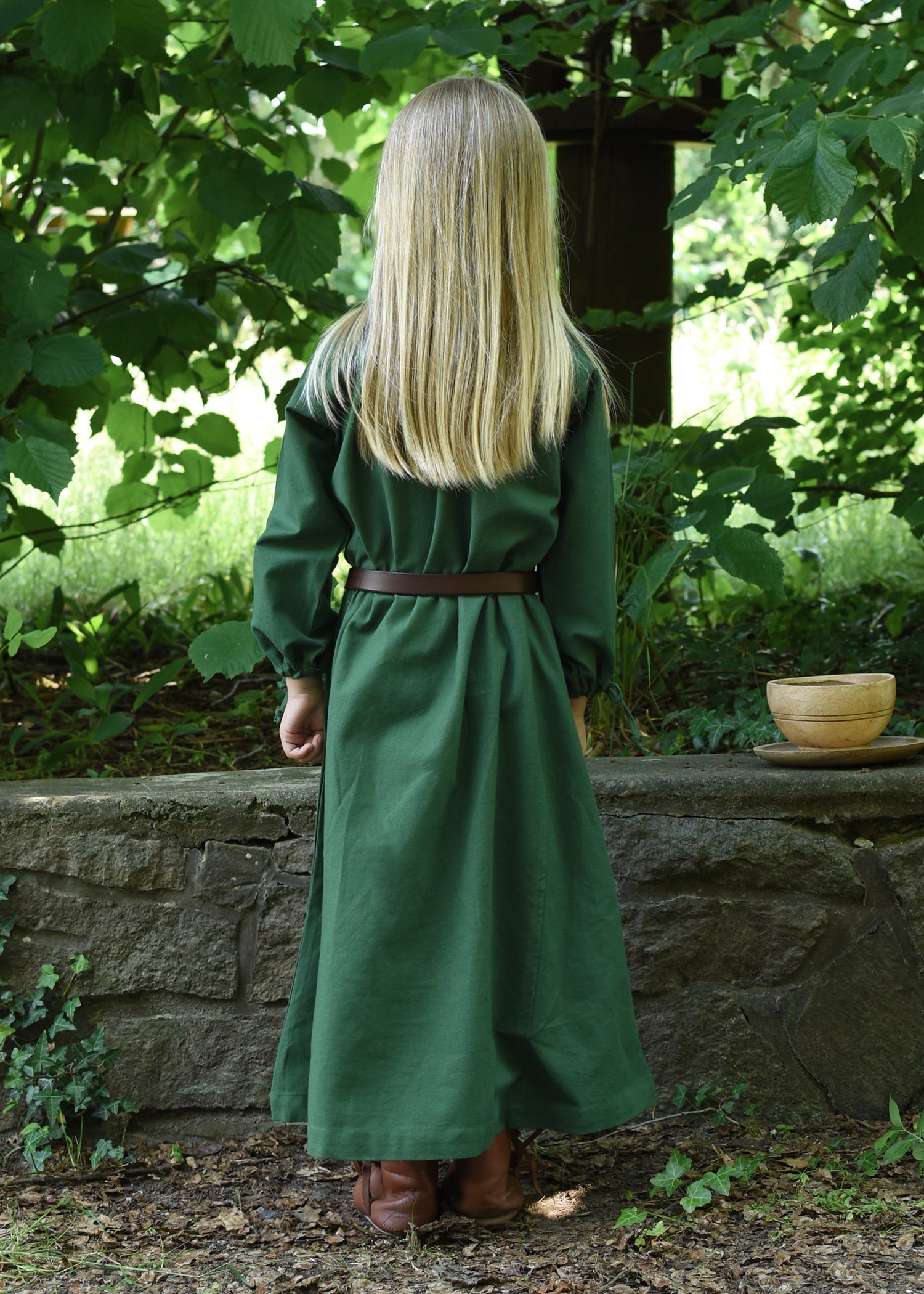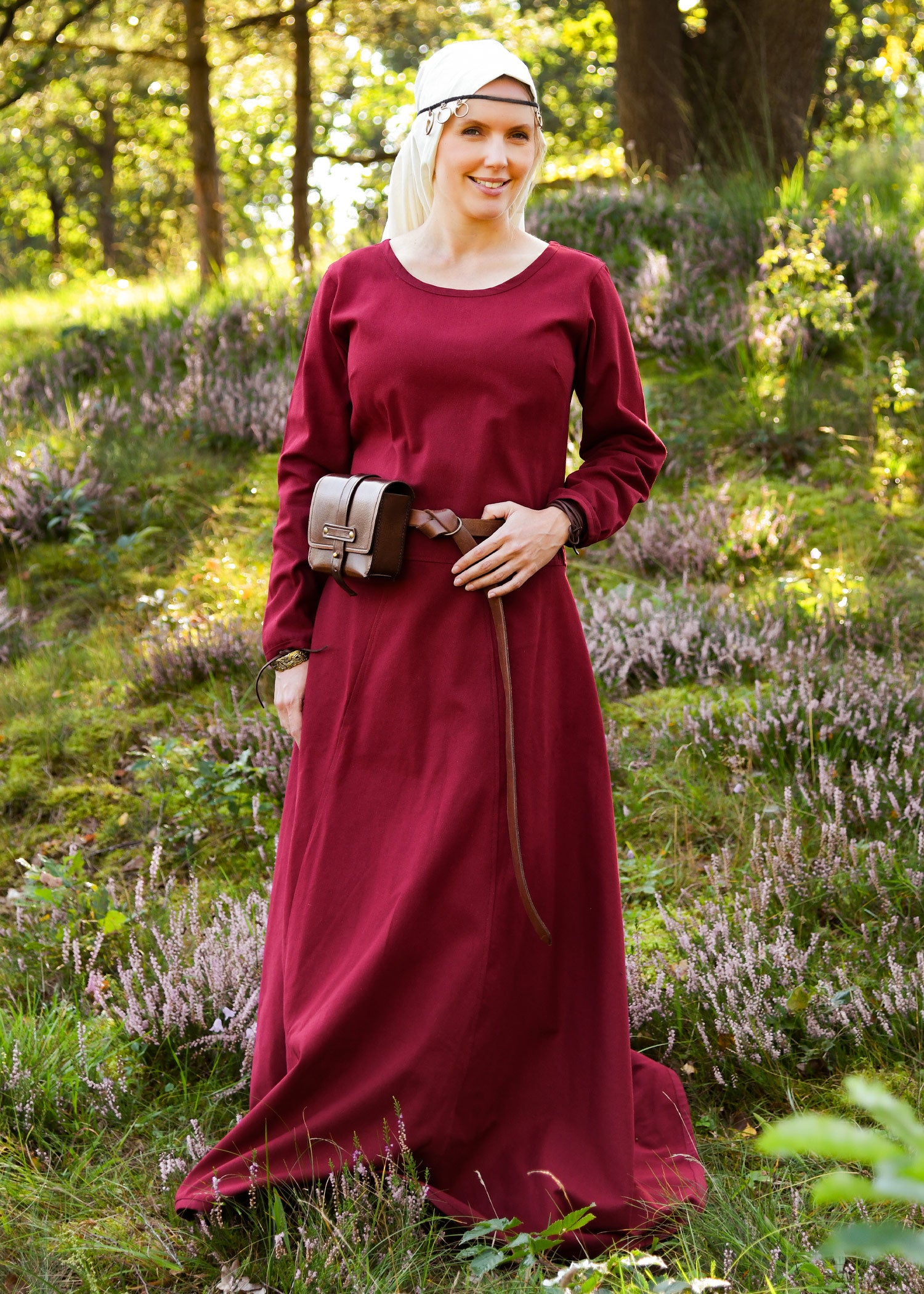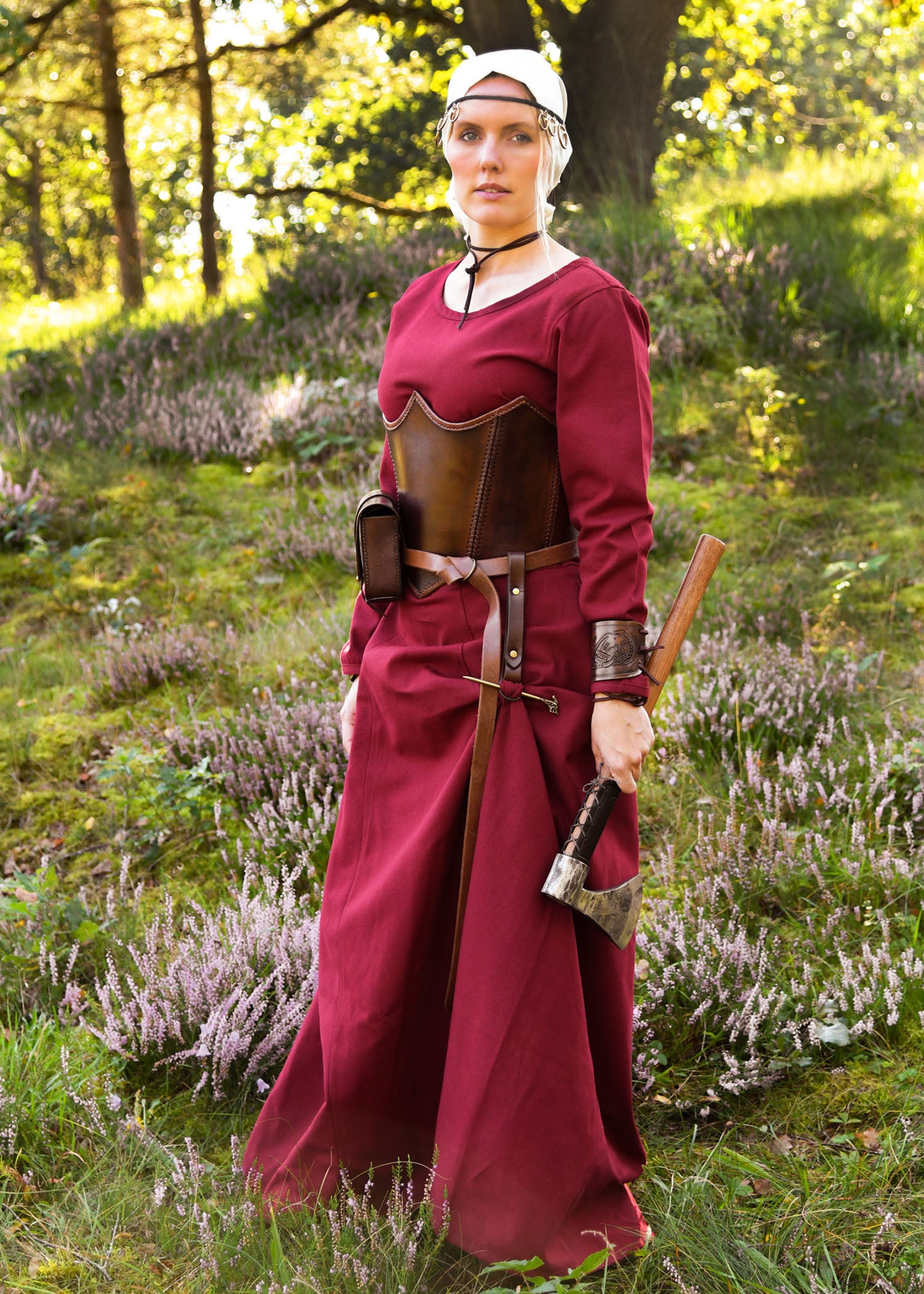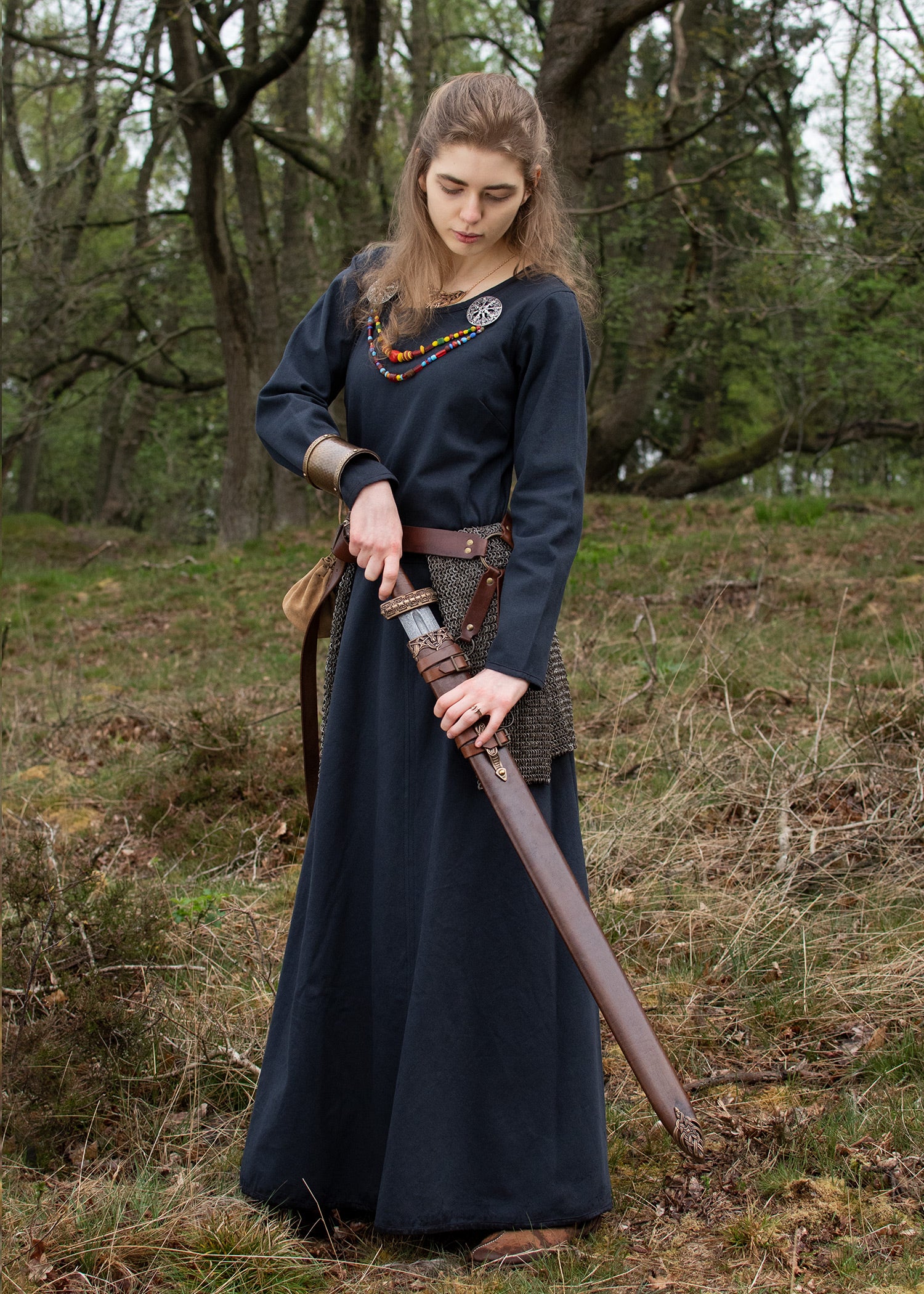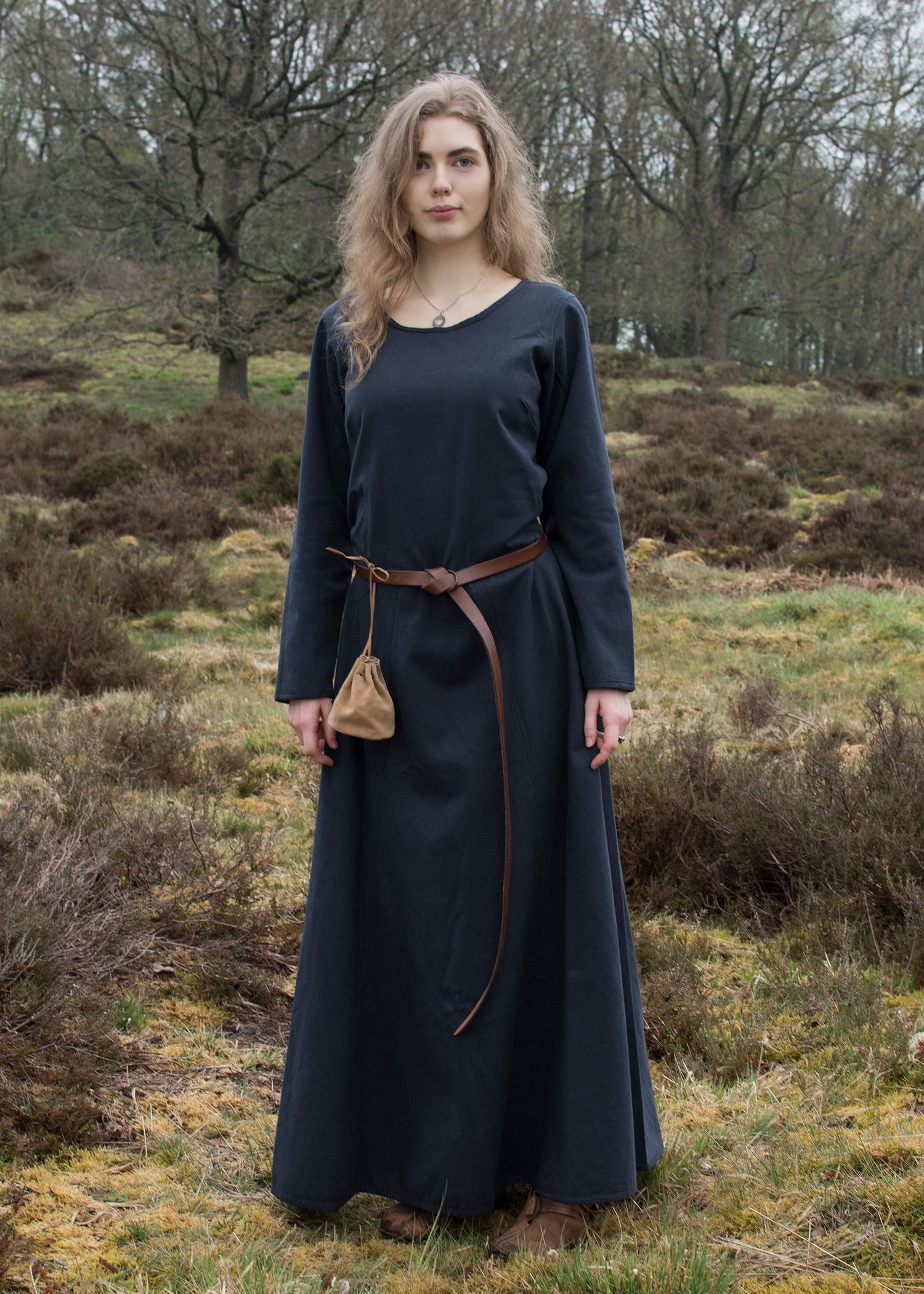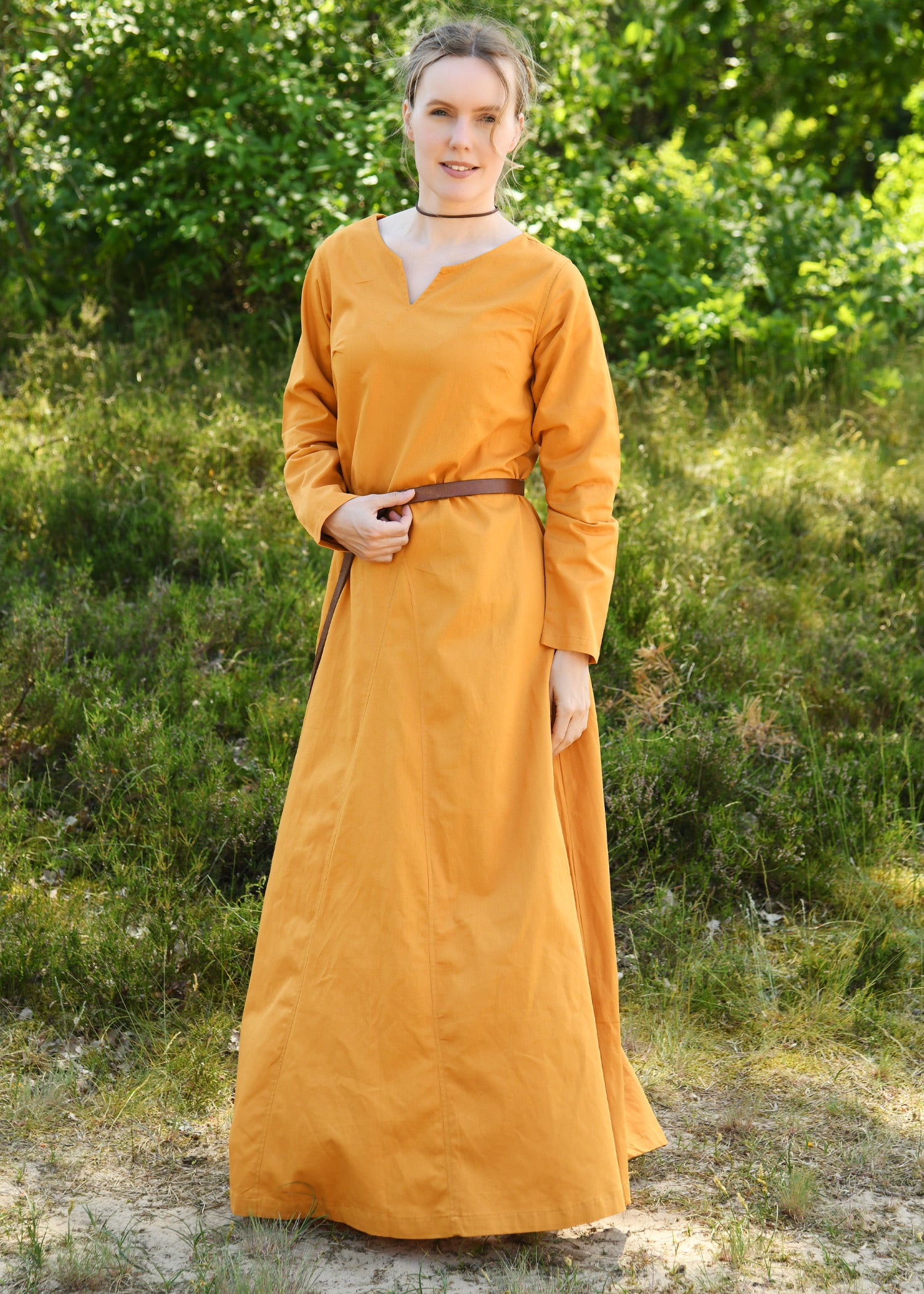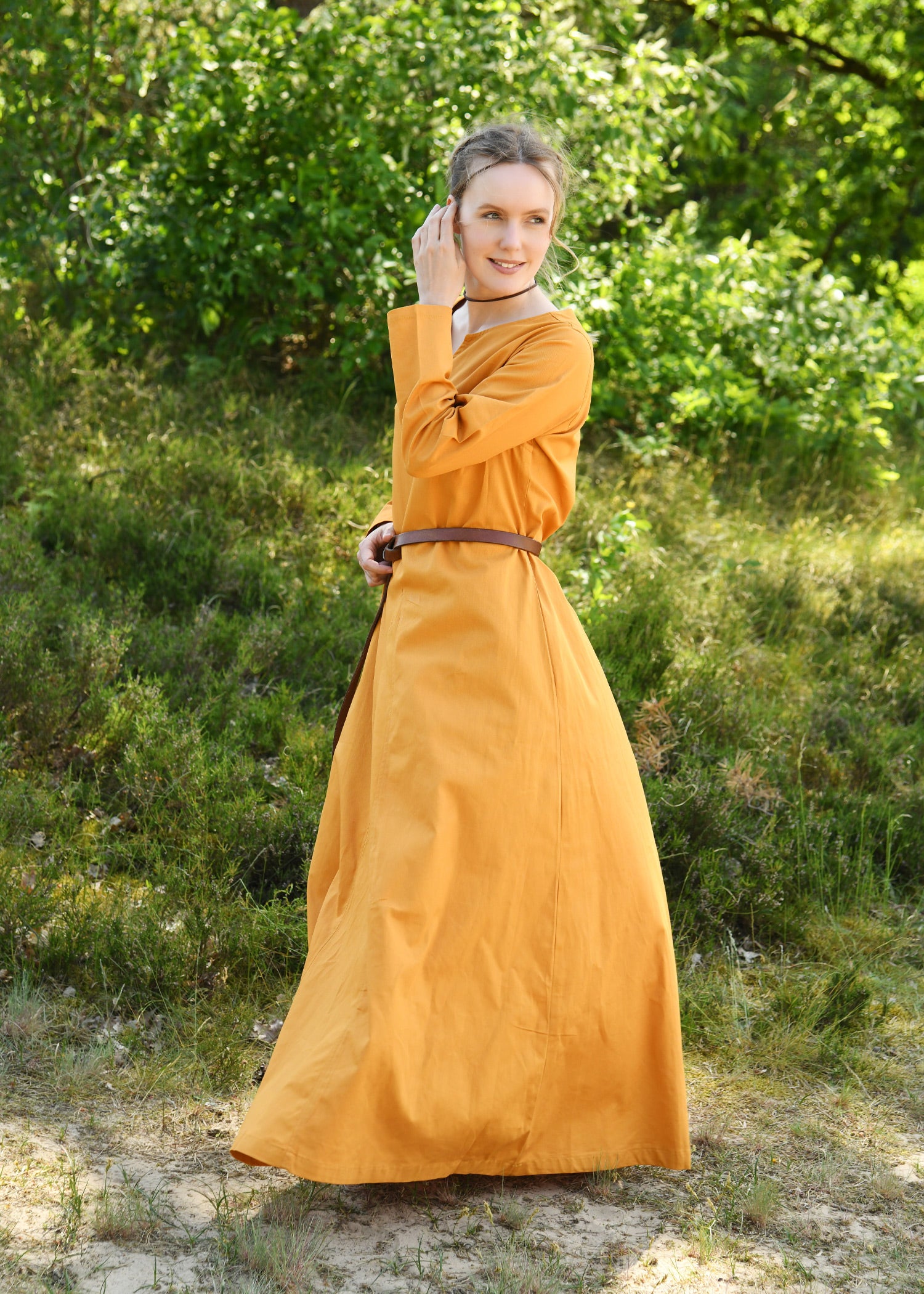High Medieval dresses: medieval elegance and functionality
Early medieval dresses were essential pieces in women's wardrobes, combining elegance and practicality . From simple linen styles for everyday wear to rich silk gowns for the nobility, these dresses reflected both the social status and needs of individual women. Over the centuries, dress designs evolved, adapting to cultural influences and the demands of the medieval environment.
Main types of dresses from the High Middle Ages
- Simple linen dress : Common among peasant women, with long sleeves and no embellishments.
- Norman dress : More elaborate, with embroidery and decorative details on the neck and sleeves.
- Noble silk dress : Richly decorated, with a straight or fitted cut and details of precious stones or embroidery.
- Dress with overdress : Popular style among the nobility, combining a base dress with a more elaborate overdress.
Characteristics of the dresses of the High Middle Ages
- Natural materials : Linen, wool and silk were the most used depending on social status.
- Straight or fluid cut : Depending on the use, dresses could be tighter for nobility or loose for greater comfort.
- Long, wide sleeves : Common features in women's clothing of the time.
- Embroidery decorations : They indicated the social rank and wealth of the wearer.
Early medieval dresses were more than just a garment; they represented the culture, religion, and social status of medieval women. If you're looking for replicas of medieval dresses for historical reenactments, collecting, or authentic medieval attire , you'll find period-accurate styles at Medieval Store .

